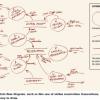|
|
Requirements-Based Testing: An Overview In this article, the author discusses how to deliver more function, in less time, and with fewer resources while maintaining a high level of quality. He details how poorly written requirements can lead to major system errors. This paper also explains why good requirements are a critical part of any successful project.
|
Gary Mogyorodi, BIT, Inc.
|
|
|
The Product Champion: Making Sure that Customer, Team, and Business Needs Are Well Represented in the Development Process Having a close relationship with the customer is always a good idea. But with that relationship comes risks. Most projects could use a knight in shining armor to protect their product's future. Discover how a product champion can help your organization stay focused on the customer without losing sight of the big picture.
|
|
 |
Visual Requirements Instead of wading through requirements documents, try drawing them instead. Learn about three simple diagrams and how to turn them quickly into valuable models. The diagrams presented here represent the most commonly used types for each of the three software dimension perspectives: data flow diagrams for function, class diagrams for information, and state transition diagrams for behavior.
|
|
|
|
Give 'em the Business Miscommunication is at the heart of most software defects. Being knowledgeable about a company as a whole, and not just about the specs of a particular project, is just one more way to safeguard against failures. Read on as Elisabeth Hendrickson explains the importance of technical people staying informed about business strategies.
|
|
|
|
Requirements Workshop Agenda (template) This template for a requirements workshop includes preparation tasks and, a place for listing workshop tools and participants.
|
|
|
|
Assuming the Worst about Requirements Requirements are under suspicion. Read between the lines of software and project management journalism and you'll hear nearly everyone lamenting the sad state of requirements. Managers plan only eight percent of project time for requirements. Developers worry about Zen-like requirements that lack sufficient detail to produce serviceable code. Testers think they have to backfill requirements. So, what were the analysts doing?
|
|
 |
A Look at Application Prototyping with easyPilot This application tool allows non-programmers to produce working prototypes of Windows, or Web-based, database-driven applications. Read on to find out how this new tool makes protoyping a viable part of the IT software development process.
|
|
|
|
Are You Listening? Chances are you won't be able to deliver on everything your customer wants. Asking good questions at the beginning of a project can help you determine where your customer wants to go. Although you may not be able to give them everything they want, if you are able to deliver the top ten things on a list of fifty items you've still delivered value. Keeping the lines of communication open is essential to helping you achieve your project goal.
|
|
|
|
Applications-Centric Testing of System-Level Components Testing system-level components such as the Java API for XML-Based Remote Procedure Calls is a challenging task. Employing use-case techniques from the Unified Modeling Language (UML), Vinay Pai describes a novel approach for testing such components. His team developed use cases for a realistic application that would use the components, then developed test case designs from those use cases. The resulting test suite uncovered more than 200 defects in eight months, and exceeded code coverage goals by almost 50 percent. Learn the details of this approach and recommendations for transitioning to application-centric testing for your system-level components.
|
Vinay Pai and Arun Gupta, Sun Microsystems
|
|
|
Testing from Use Cases Using Path Analysis Technique Use cases are an industry-standard method of specifying user interaction with the system, and hence have become part of the requirements definition phase of many software projects. They're used to derive, construct, and validate interfaces, classes, relationships, and processes in an application. This session introduces participants to a testing methodology called, use case path analysis. This technique has proven to be an extremely powerful way to create accurate, realistic test cases based on the use cases. Usable in any environment, with any tool set, use case path analysis not only saves time and money, it also helps you to control risk.
|
Naresh Ahlowalia, Object System Group
|

